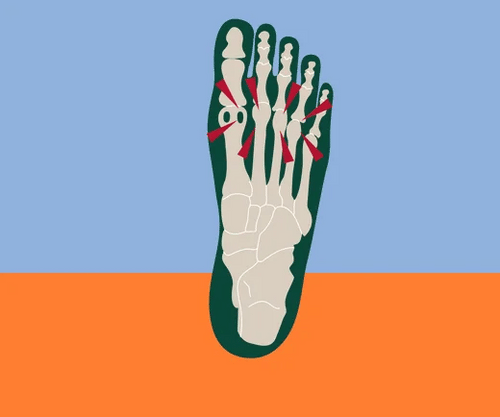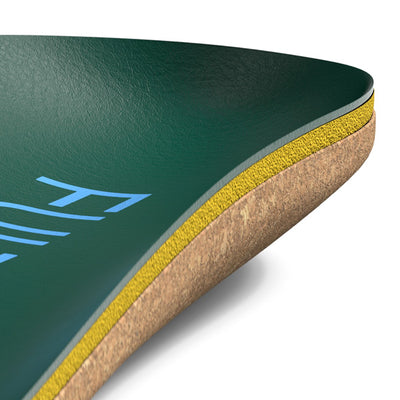Insoles for Metatarsalgia
Metatarsalgia is a painful condition, causing discomfort in the forefoot (aka ball of the foot) under one or more metatarsal heads. The metatarsals are the five bones connected to the toes at the forefoot. Think of these bones like a series of bridges connecting the toes to the ankle bones. The metatarsals help you walk, stand, and run by supporting the forces and plantar pressure of your entire body.
Changes in weight distribution (possibly due to poor mechanics), deterioration of support structures, or an increase in force (often experienced during high-impact sports1) contribute to the development of metatarsalgia, otherwise known as the inflammation or irritation of the metatarsals.
The good news? Insoles can help correct many causes of metatarsalgia, alleviating pain.
Why You Shouldn't Ignore Metatarsalgia Pain
If you experience one or more of the following sensations in the forefoot, you might have metatarsalgia.
Symptoms of Metatarsalgia
- Burning, sharp, shooting pain or achiness in the ball of the foot
- Numb or tingly sensation in toes
- Increased discomfort while standing, walking, or running that subsides with rest
Untreated metatarsalgia can result in other foot and ankle conditions and even cause pain in different parts of your body. For example, if you walk abnormally to avoid putting pressure on the balls of your feet, the resulting misalignment can affect your lower back and hips(1).
Fulton insoles can minimize your discomfort and reduce the risk of further problems. We have a variety of insole types to suit diverse needs.

Address Metatarsalgia Pain with Fulton Insoles
Key Features of Insoles for Metatarsalgia
You can wear Fulton's insoles inside of various shoe types, from casual to athletic, ensuring your feet are protected whatever the occasion. When designing our metatarsalgia insoles, we prioritize:

Arch Support
- Firm arch support helps reduce the likelihood of your foot rolling outward. Proper mechanics keep the foot and ankle aligned, reducing metatarsalgia risk.
- Correct alignment also helps distribute weight equally across the foot, reducing pressure on the ball of the foot.
- Fulton insoles have a cork base that molds to the unique shape of your foot for tailored support.

Impact Absorption
- Shock absorption is a must because high-impact activities are one cause of metatarsalgia. Insoles designed for this condition help alleviate the shock when your foot hits the ground when running or jumping, for instance.
- Fulton athletic insoles contain cork – an exceptional shock-absorption material – that molds to the foot for customized comfort and support.

Cushioning Foam
Featured Reviews
Finally something that works!
I have shoeboxes full of the various insoles and custom orthotics I've tried over the years. The Classic Insole took a couple days to get formed to my foot but my foot pain is finally gone and my shoes are super comfy!
Bob
Better than custom orthotics
Yes, you need to break them in so that they can form to your foot/gait/body type, but with a small investment in time, you will get an absolutely awesome pair of replacement insoles. I won’t say these are the last insoles that I will ever buy, but I will say they are the last BRAND!
Edward
Game changing
As someone with flat feet, I've struggled with insoles because they are either cheap and poorly made or incredibly expensive. Fulton Insoles are affordable and work beautifully, perfectly molding to my foot while giving me the support I need.
Perri
Great all-purpose insoles, less foot pain
I had serious foot pain and bought Fulton insoles on a whim, thinking they might help. I brought them to my orthopedic doctor, and he told me that they were 1) the best he has seen on the market and 2) if I wore them in my running shoes every day, my foot pain would go away, as it was due to unsupported arches. My foot pain is gone, I'm back to running, and my feet feel amazing.
Matt
Medical-Quality Insoles
Fulton insoles are as good as medical-grade orthotics, without the hefty price tag and doctor visits. As someone who has tried multiple types of insoles including doctor-prescribed inserts, I can say without a doubt that these are my new favorite pair.
Devin
Finally something that works!
I have shoeboxes full of the various insoles and custom orthotics I've tried over the years. The Classic Insole took a couple days to get formed to my foot but my foot pain is finally gone and my shoes are super comfy!
Bob
Better than custom orthotics
Yes, you need to break them in so that they can form to your foot/gait/body type, but with a small investment in time, you will get an absolutely awesome pair of replacement insoles. I won’t say these are the last insoles that I will ever buy, but I will say they are the last BRAND!
Edward
Game changing
As someone with flat feet, I've struggled with insoles because they are either cheap and poorly made or incredibly expensive. Fulton Insoles are affordable and work beautifully, perfectly molding to my foot while giving me the support I need.
Perri
Great all-purpose insoles, less foot pain
I had serious foot pain and bought Fulton insoles on a whim, thinking they might help. I brought them to my orthopedic doctor, and he told me that they were 1) the best he has seen on the market and 2) if I wore them in my running shoes every day, my foot pain would go away, as it was due to unsupported arches. My foot pain is gone, I'm back to running, and my feet feel amazing.
Matt
Medical-Quality Insoles
Fulton insoles are as good as medical-grade orthotics, without the hefty price tag and doctor visits. As someone who has tried multiple types of insoles including doctor-prescribed inserts, I can say without a doubt that these are my new favorite pair.
Devin
Designed and Supported by Doctors
1. Metatarsalgia. Cleveland Clinic. Retrieved January 23, 2025, from Metatarsalgia: Symptoms & Treatment




